
[ad_1]
Looking for an intro to authentic Spanish cooking? Below I’ll share my top 29 Spanish recipes to make at home, from simple classics to dinner-party favorites. I hope they’ll bring a taste of Spain to your kitchen!
I’m still surprised when I visit a “Spanish” restaurant in the US and see so few authentic Spanish dishes on the menu. I’m a huge fan of fusion and adaptations—but I often wonder if the chef knows what the original version is supposed to taste like!
The beauty of traditional Spanish recipes (from Spain!) is their simplicity. The highest-quality local ingredients prepared with perfect technique and minimal intervention—THAT is the true essence of Spanish cooking.
The Best Spanish Recipes to Try at Home
Traditional Spanish recipes aren’t usually difficult—but they do have their tricks. I encourage anyone who loves (or even likes) cooking to experiment with some of the authentic Spanish dishes below.
It was hard to narrow down this list, but I chose the Spanish classics you’ll be able to make time and time again. Once you’re comfortable with them, you can start to play around with different ingredients and variations!
You’ll notice a common theme in traditional Spanish cuisine: lots of potatoes, eggs, tomatoes, and rice (this is the land of paella, after all). You might be surprised by how versatile and delicious these simple ingredients can be when prepared just right!
See Also: Scroll through a slideshow of my favorite Spanish recipes.
1. Tortilla de Patatas
Tortilla de patatas is one of the most typical Spanish foods. It’s one of those dishes you’ll find people eating at all hours of the day (and night!) and something that people make at home and also order out.
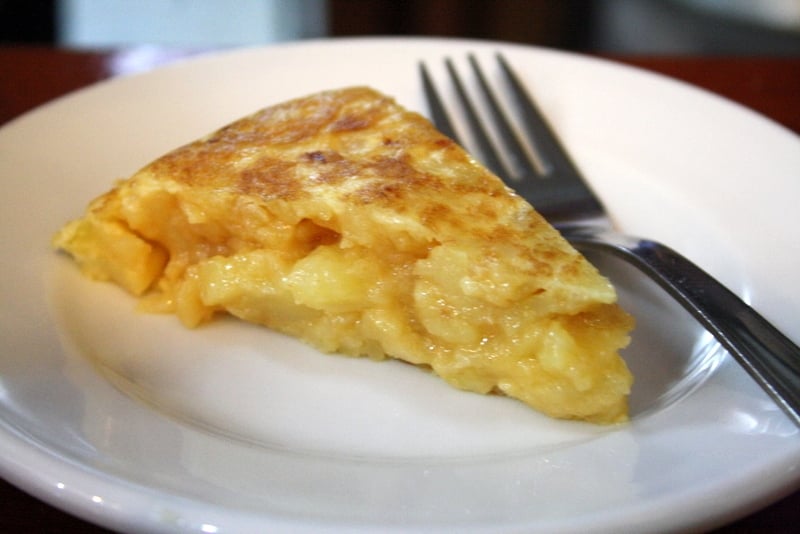
But for what’s arguably the national dish, this Spanish omelet isn’t very well known outside of the country. Here in Spain, the most common way to make a tortilla is with potatoes; we call it tortilla de patatas.
The recipe for tortilla de patatas varies greatly based on how much you cook the eggs (runny, dry, or somewhere in between) and how you cook and cut the onions and potatoes.
The most controversial aspect of the tortilla is whether or not it should include onions (in my opinion, it definitely should). Some people even add other ingredients like ham and peas—but modifications are less common than you might think!
Making the perfect tortilla is truly an art, but luckily there are plenty of tips to make a delicious Spanish omelet at home. My top tips are to use room-temperature eggs (good ones, please!) and to caramelize the onions.
I like my tortilla cooked medium—not runny, but still nice and gooey inside. To cook it just right, I use a small frying pan (the size of one fried egg). So instead of one large tortilla, I make three or four small ones. Works perfectly every time!
Make It: Here’s my go-to Spanish omelet recipe—time to start practicing the perfect tortilla flip!
2. Pan con Tomate
In Barcelona (and all of Catalonia) you’ll always be asked if you want pan con tomate (bread with tomato) with your meal. Note—if you say yes, you’ll be charged accordingly! But in most cases, it’s totally worth it.
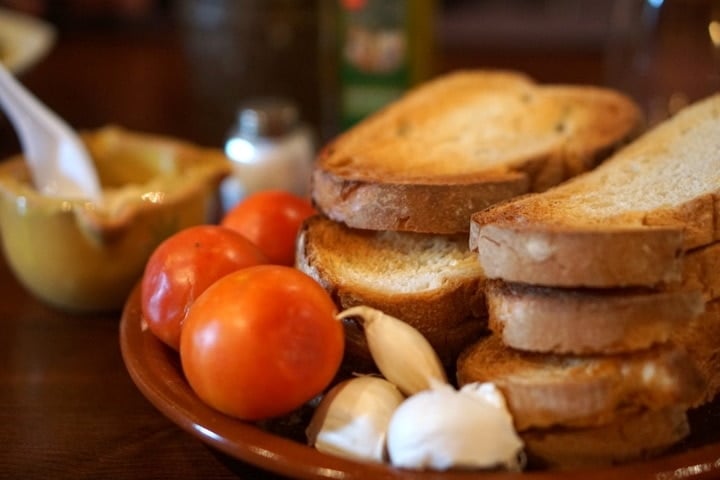
At its simplest, pan con tomate is fresh bread rubbed with half of a tomato. But like most traditional Spanish recipes, it’s a bit more complex than meets the eye…
I personally prefer when the bread is toasted, and then I like to rub it with just a bit of raw garlic. Skip this step if you have big plans later—but it’s delicious. After that, you’ll need special “rubbing tomatoes” (in Barcelona you can ask for tomates de untar).
While these won’t likely be available where you live, do experiment with different types of tomato to see which one works best. The tomato should almost melt onto the bread (not like some varieties that’ll give you just a bit of juice and seeds).

Next, add some of the best extra virgin olive oil you can find—the quality of the oil will make all the difference. For bold and spicy flavor, go for an Andalusian Picual; for mild and fruity notes, try a Catalan Arbequina.
Finally, sprinkle on some high-quality sea salt. Now THAT is pan con tomate!
Make It: Try my super simple pan con tomate recipe at home.
3. Tostada con Tomate, Aceite y Jamón
In Andalusia, they do things a bit differently when it comes to bread and tomato. Here, breakfast is all about the tostada: a piece of toasted bread covered with your choice of toppings.
Popular choices include butter and homemade jam, local olive oil, tomato, paté, and ham. But here I’ll focus on what I consider the perfect combination: crushed tomato, olive oil, and cured ham!
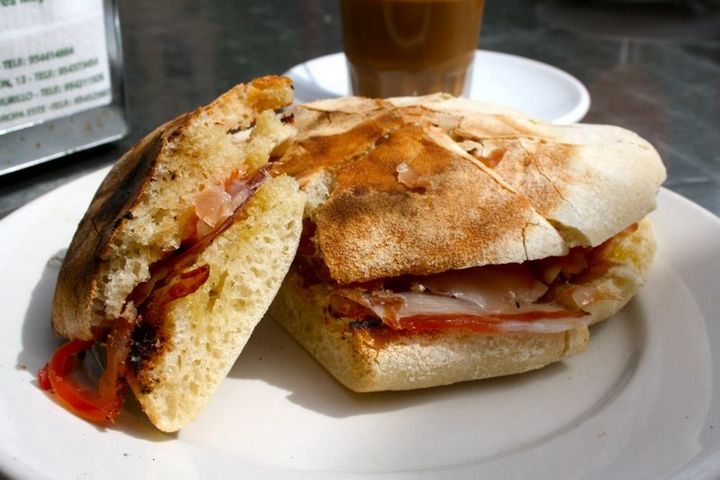
This tempting trio of toppings makes for one of the most delicious and well-balanced breakfasts you’ll find in Spain. I recommend using high-quality sourdough bread or, if you can find it, something similar to a Spanish mollete (an unleavened flat bread).
This is basically a variation of pan con tomate, so it doesn’t really require a full recipe—just a few steps. First, toast the bread and top it with high-quality extra virgin olive oil. Next, spread on some tomato purée (you can make it in the blender with a dash of olive oil and sea salt).
Finally, top your tostada with high-quality Spanish ham: ideally jamón serrano or jamón ibérico (I prefer ibérico, but it’s up to you!). Enjoy it with a café con leche and freshly squeezed orange juice.
See Also: Top 8 Spanish Breakfast Foods
4. Croquetas
Creamy on the inside and crunchy on the outside—that’s the sign of a perfect Spanish croquette.
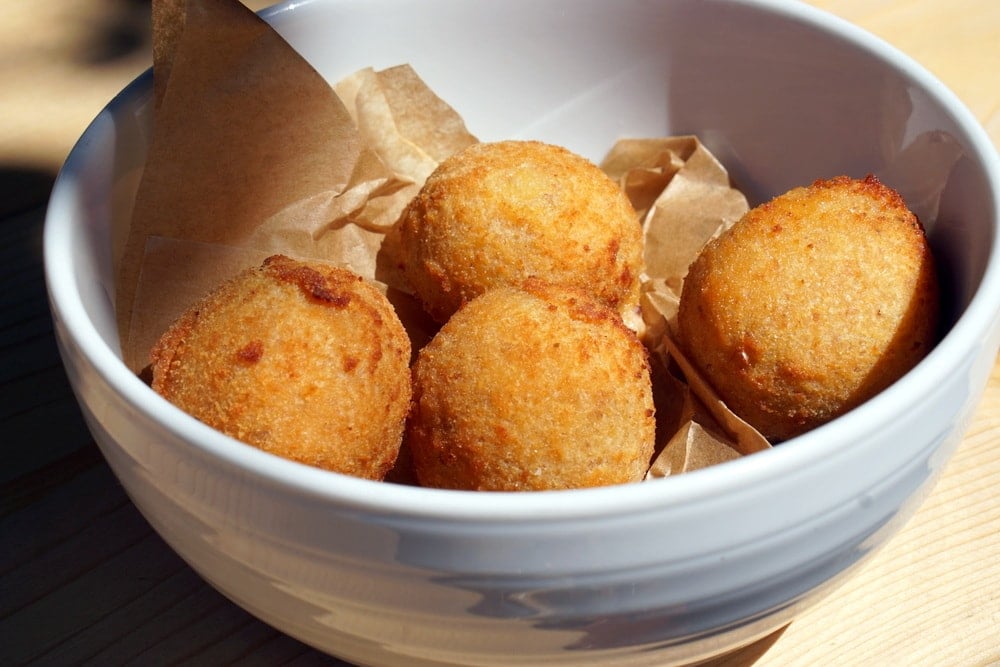
There are countless varieties of croquetas here in Spain, but the most traditional are creamy Iberian ham croquettes (croquetas de jamón ibérico). The rich flavor of the ham combines perfectly with the creamy béchamel sauce.
The technique for any good croquette is similar—it all starts with a creamy, slow-made béchamel. Then the supporting ingredient comes along, whether it’s ham, cod, veggies, or something else. In my experience, the secret to great croquetas is taking your time and stirring constantly!
Make It: Try my ham croquettes recipe or salt cod croquettes recipe!
5. Gazpacho
The Spanish cure for just about anything (cold, flu, hangover…) is gazpacho. And with good reason. This veggie-packed cold soup (although it’s more like a thin smoothie or juice) packs in the vitamins—and existed long before any modern health fad.
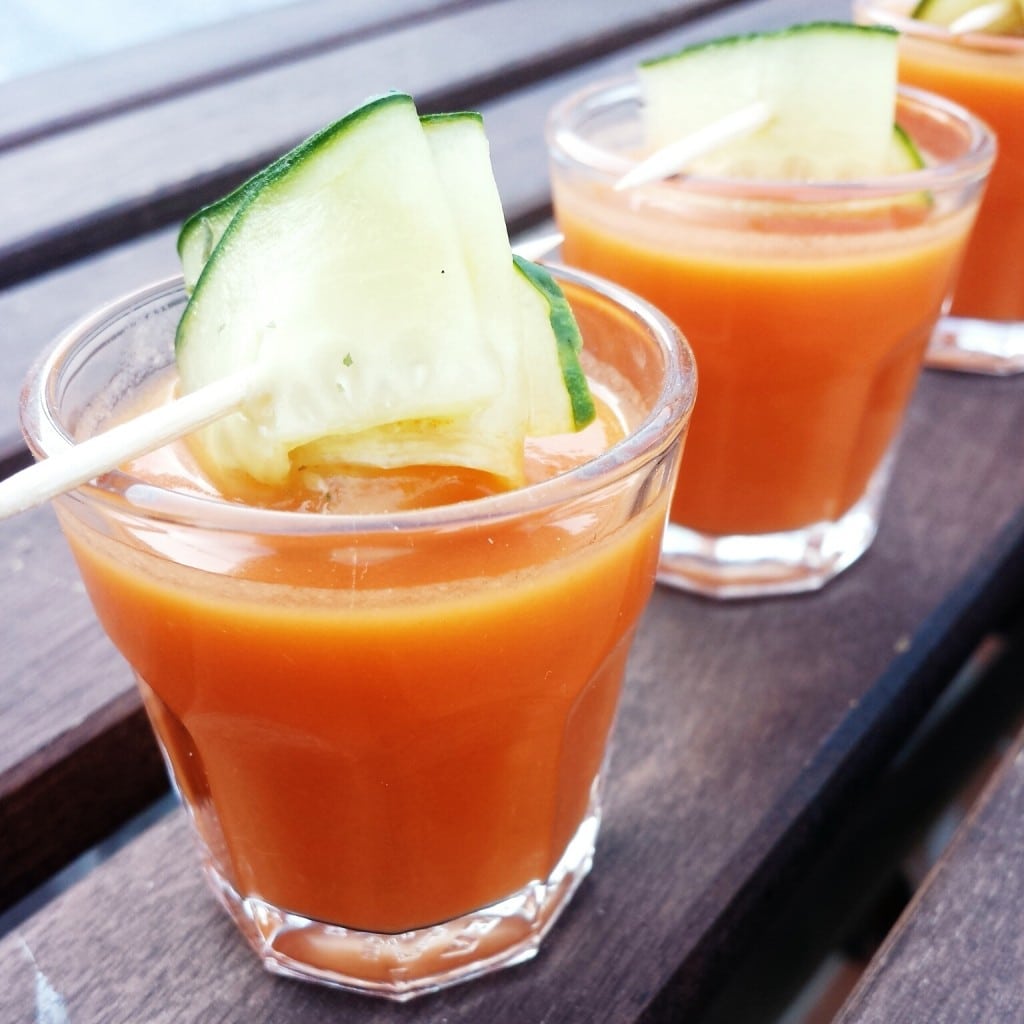
I prefer my gazpacho served ice-cold and in a glass. I love the traditional version (pepper, tomato, garlic, onion, extra virgin olive oil, and sherry vinegar), but I also like variations with cucumber or even fruit.
Make It: Try my refreshing traditional Spanish gazpacho recipe or watermelon mint gazpacho recipe—both are great!
6. Salmorejo
I often tell the story about my first taste of salmorejo. I almost committed the mortal sin of heating up this delicious cold soup!
Luckily I tasted it first, and since then I’ve been obsessed with this healthy and delicious Andalusian delicacy. My favorite way to eat salmorejo is topped with hard-boiled egg and cured jamón—it’s the perfect combination!
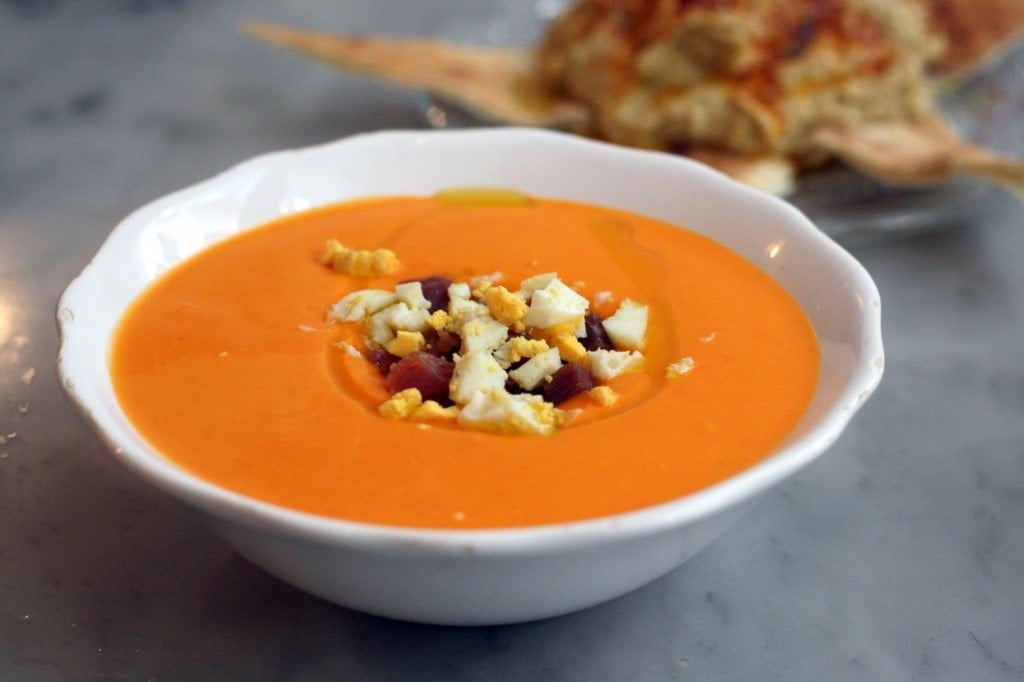
Make It: Try my mother-in-law’s incredible salmorejo recipe to see what all the fuss is about.
7. Huevos Rotos
This traditional Spanish dish is simplicity at its best. Perfectly fried potatoes are topped with Spanish fried eggs, which are then “broken” (rotos) and mixed with the potatoes.
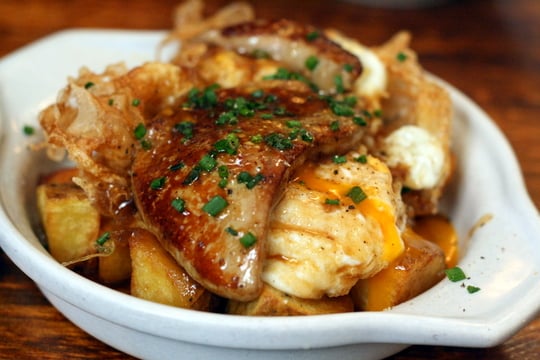
Here in Spain, we practically deep-fry our eggs by cooking them quickly in a pan filled with olive oil. When done correctly, the yolk is left runny and the whites are nice and crispy.
There are all sorts of variations on huevos rotos with ham, chorizo, blood sausage, vegetables… the list goes on! Just remember, you won’t find these for breakfast in Spain; this is lunch or dinner food.
Make It: This huevos rotos recipe is easy to make and always satisfying!
8. Chorizo a la Sidra
Possibly one of the easiest dishes on this list, chorizo a la sidra is simply delicious Spanish chorizo (paprika-spiced pork sausage) cooked in dry Spanish cider. Ideally, you should use fresh or semi-cured sausage and dry cider from Asturias or the Basque Country.
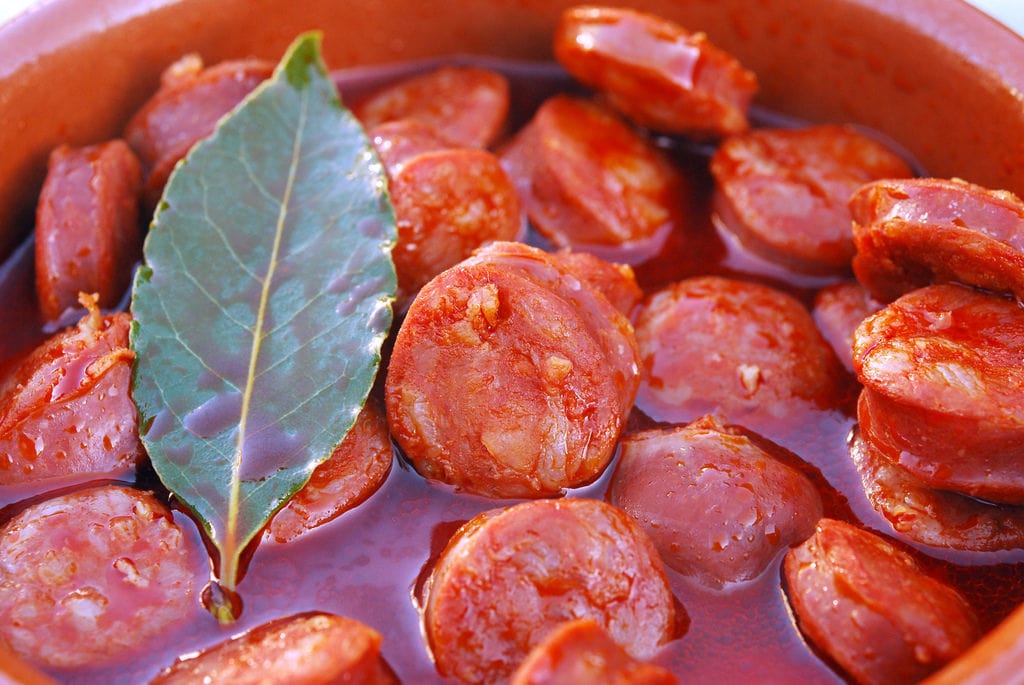
Make It: Check out my chorizo a la sidra recipe—it couldn’t be simpler.
9. Crema Catalana
One of my favorite desserts in Spain is crema catalana: the supposed predecessor to France’s crème brûlée (though there are conflicting stories!). That said, not all crema catalana is created equal; the best versions are creamy and homemade, but others can be watery and bland.

Crema catalana is often a bit more rustic than crème brûlée. It’s not quite as creamy, and at some traditional restaurants the homemade version can be almost scrambled. The sugar on the top is also often more burnt—but I love it anyway!
Make It: Try my trusty crema catalana recipe for an authentic Catalan dessert!
10. Flan
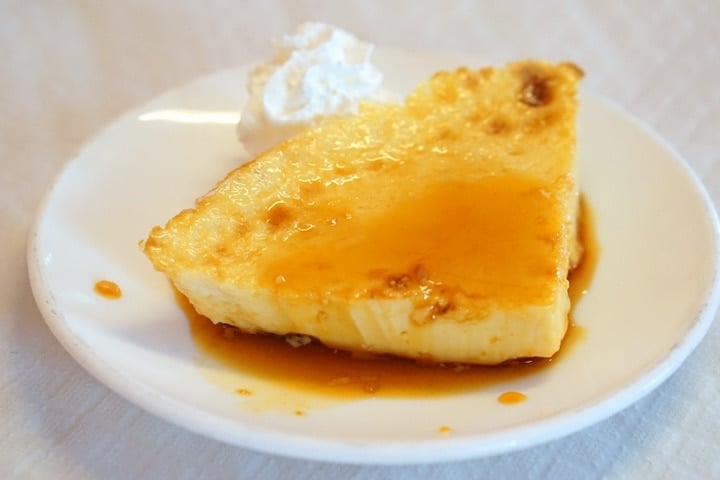
Flan is one of the most typical Spanish desserts, but like crema catalana, it can be really delicious or really terrible. They even sell pre-made flan at the supermarket (in the yogurt section) and instant packets that you mix with milk or water. Apparently, somehow flan appears… I haven’t tried it!
But good homemade flan is well worth the effort. It’s creamy and eggy, with just a touch of caramelized sugar syrup on top. There are countless variations, but I suggest starting with the basic recipe!
Make It: Start with my traditional Spanish flan recipe, or experiment with this flan recipe from the Canary Islands.
11. Empanada
One typical Spanish food that I almost always prefer to make at home is the humble empanada. Spain’s version of this classic snack is more like a large rectangular pie than the hand-held pockets of dough you might be used to.
Unfortunately, the ones you’ll find at bars and cafés are often dry, bready, and served at room temperature. They lack the perfectly cooked shell and piping-hot filling of empanadas from other countries (like Argentina).
Nonetheless, delicious Spanish empanadas do exist, and I think the best ones are homemade. In fact—I’ll just say it—my all-time favorite is the one I make! I add a couple of unconventional ingredients, but they’re worth it.
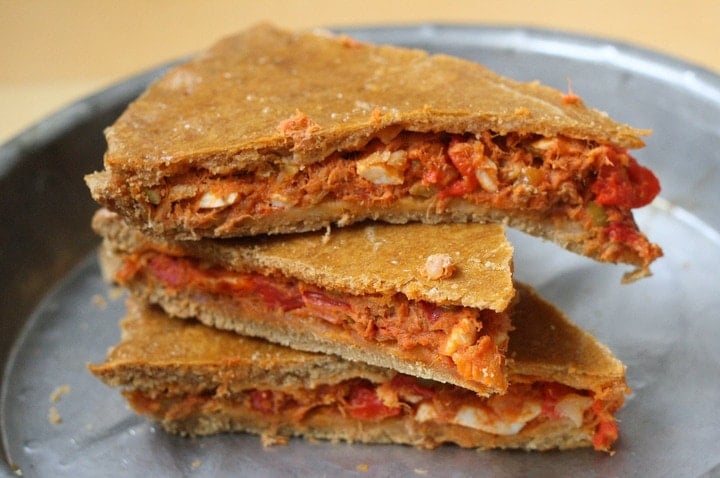
Make It: Try my Spanish empanada recipe—I swear by it!
12. Berenjenas con Miel
Whenever I’m in Andalusia, I order this local specialty. Berenjenas con miel are thick chunks of eggplant, dusted in seasoned flour and deep-fried in olive oil. They’re then drizzled with sweet honey—either the kind that comes from bees or miel de caña, which is basically molasses.
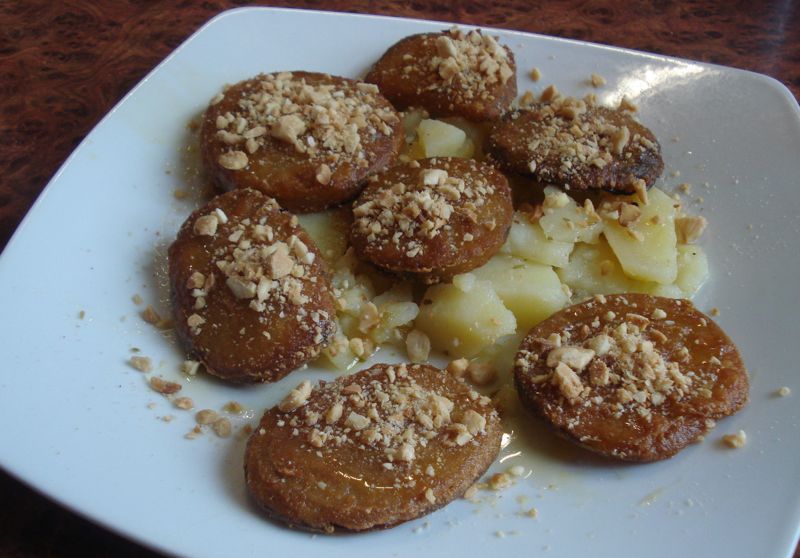
Make It: Check out my favorite recipe for berenjenas con miel.
13. Pisto
The Spanish version of ratatouille is one of the country’s most comforting dishes. Farm-fresh vegetables are slowly stewed until they’re perfectly cooked and full of flavor. Often a fried egg (huevo) is served on top for a more hearty meal. I could eat pisto every night!
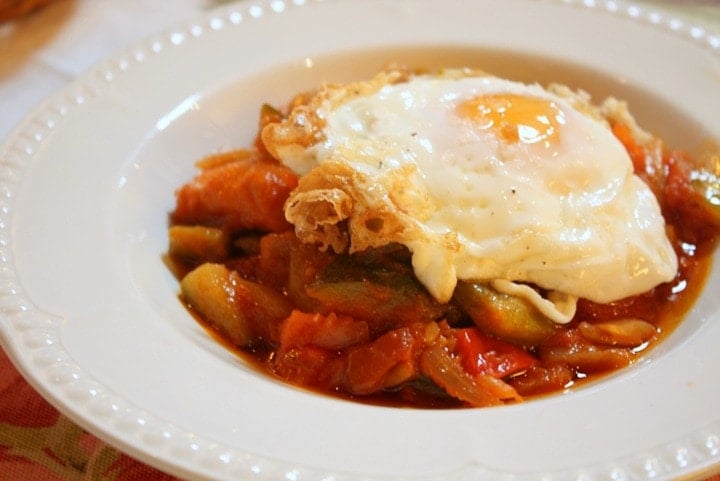
Make It: Try my version of traditional Spanish pisto con huevo yourself!
14. Churros
I’ve tried churros all throughout Spain, and have to say that my all-time favorites come from the region of Cadiz. Thin, crispy, and slightly salty—I can easily eat a whole order of these by myself! When making churros at home, I always try to recreate this version.
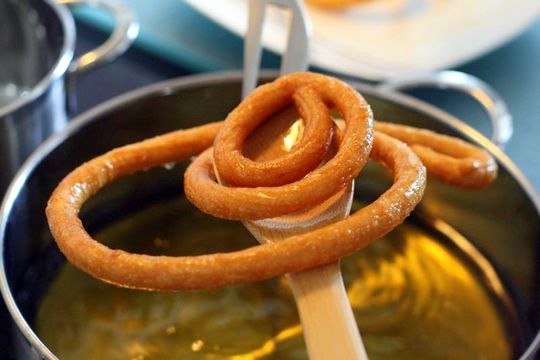
Homemade churros are delicious, but a messy affair. I wouldn’t usually make them here in Spain (opting instead to head over to a local churrería), but elsewhere you won’t find the real stuff unless you make it yourself!
Just remember, in Spain churros are breakfast or an afternoon/late-night snack—never dessert. Also, you won’t find cinnamon here—just some sugar packets and perhaps a mug of extra-thick hot chocolate.
Make It: Enjoy this authentic treat anywhere with my homemade churros recipe!
15. Spanish Hot Chocolate
How could I mention churros without hot chocolate? My easy Spanish hot chocolate recipe is almost too good to be true! This is a perfect warm-you-up drink any time of year, but I especially love enjoying it in the fall while curled up with a good book.

Make It: Give my easy Spanish hot chocolate recipe a try.
16. Classic Spanish Sangria
Many people who visit Spain are surprised to learn that sangria—an international symbol of Spanish culture—isn’t actually all that popular among locals. As a result, a lot of the sangria served at restaurants is super low-quality (definitely made for tourists).
But that doesn’t mean sangria can’t be delicious! If you ask me, your best bet is to make it yourself. It’s super easy to do, and this way you can customize it with your favorite fruits and flavors.
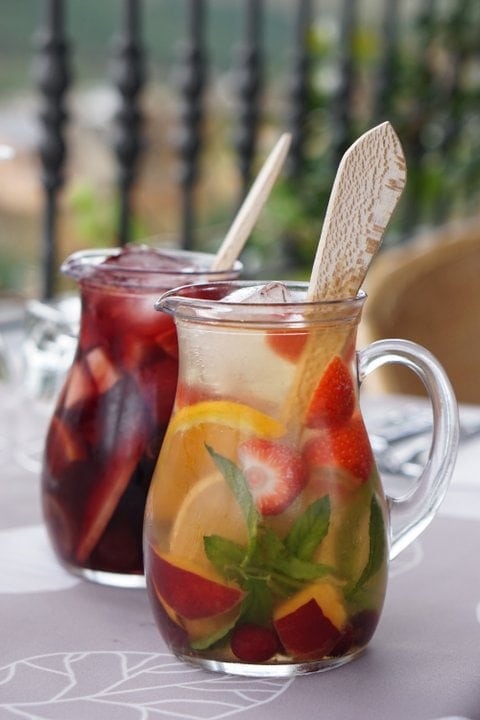
I love making homemade sangria with fresh ingredients and high-quality Spanish wine; I try to buy the sweetest fruit available to avoid adding too much sugar. I also love variations made with cava or white wine!
Make It: Try my classic Spanish sangria recipe or cava sangria recipe.
17. Gambas al Ajillo
One of the star dishes on our tapas tours in Madrid are the delicious gambas al ajillo at La Casa del Abuelo. The dish is simple—shrimp, garlic, parsley, and olive oil—which means the quality of the ingredients is key.
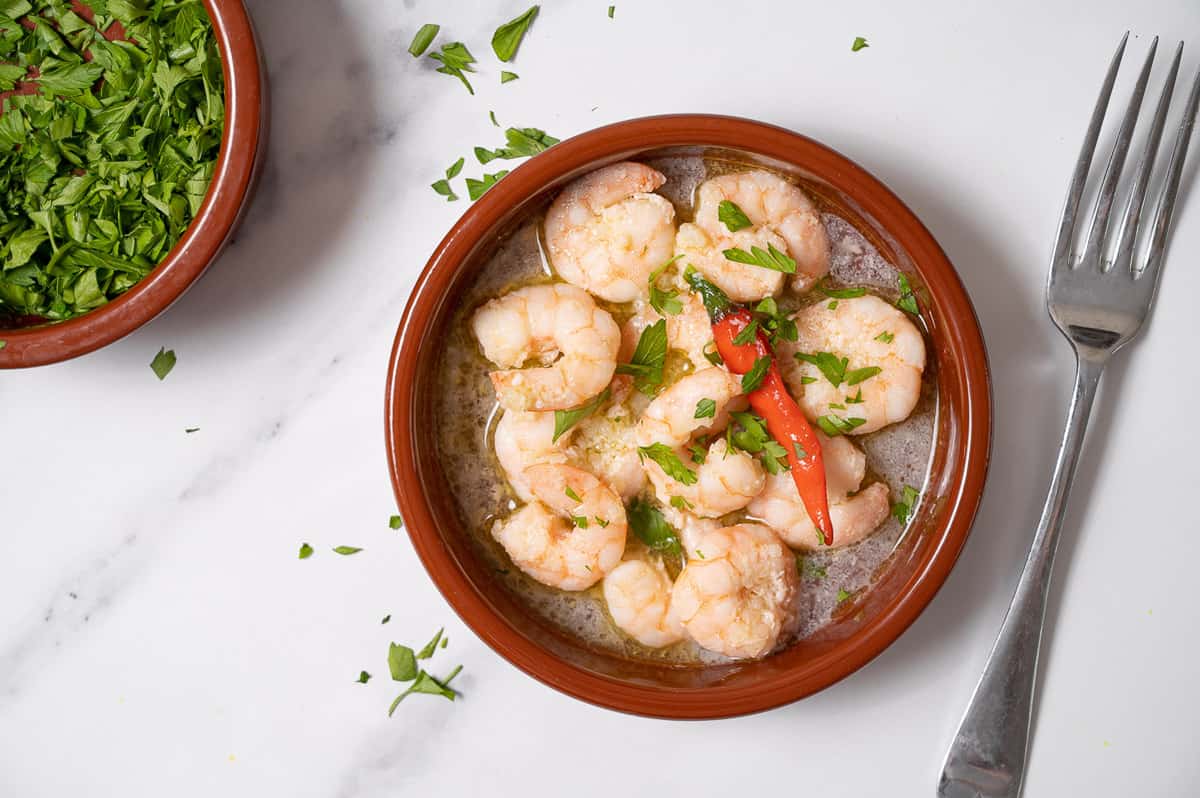
At La Casa del Abuelo they cook their gambas in individual clay dishes over a roaring flame. When they come out of the kitchen, they’re still dangerously hot! If you can make it to Madrid, I highly recommend trying them. Otherwise, recreate the classic recipe at home!
Make It: Check out my authentic gambas al ajillo recipe!
Get a behind-the-scenes look at this traditional tapa:
18. Torrijas
Most of the people I know look forward to Semana Santa (Holy Week) for a reason other than Spain’s famous processions. Easter season means it’s officially time for torrijas: Spain’s delicious answer to French toast!
Torrijas come in many forms, but they always start with a big piece of bread. The bread is covered in egg, fried in olive oil, and then soaked in either honey, milk, or simple syrup with brandy or wine. I love the honey-soaked variety.
In recent years, the torrija has also become a regular on restaurant dessert menus. In this case it’s often caramelized on the outside and served with ice cream. Truly decadent!
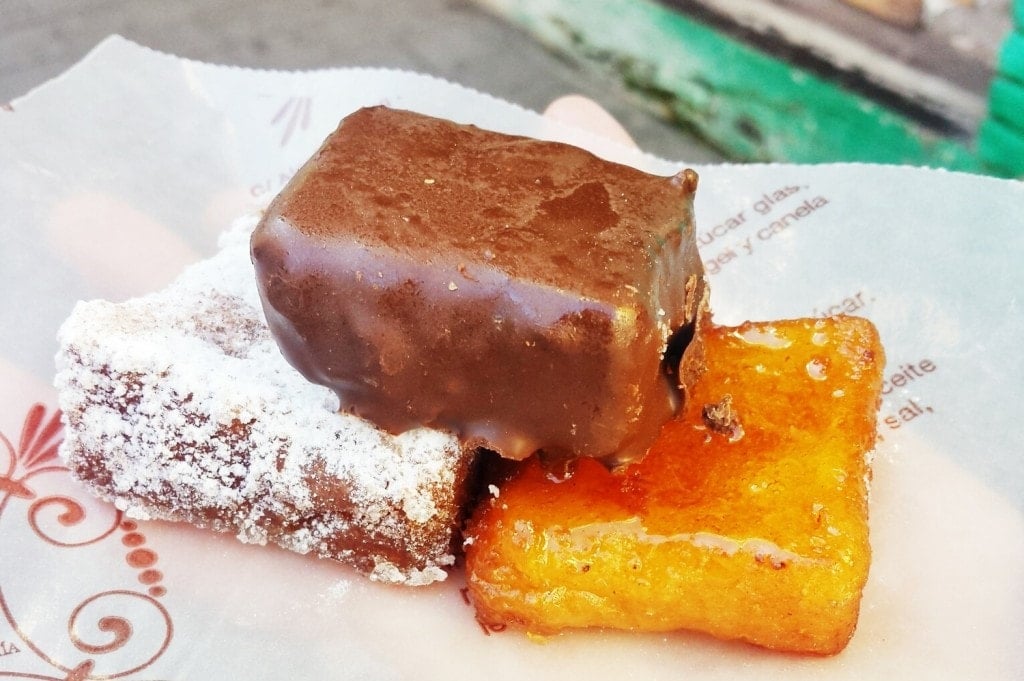
Make It: Try my torrijas recipe with cinnamon sugar and honey syrup!
19. Espinacas con Garbanzos
My mother-in-law makes delicious espinacas con garbanzos (spiced chickpeas with spinach). This makes sense, since she’s from Andalusia where the dish originated.
But I’ll let you in on a secret: my favorite version is the one I make at home (please don’t tell her!). It’s a touch untraditional—I add almonds and tomato—but sometimes a little innovation makes all the difference.
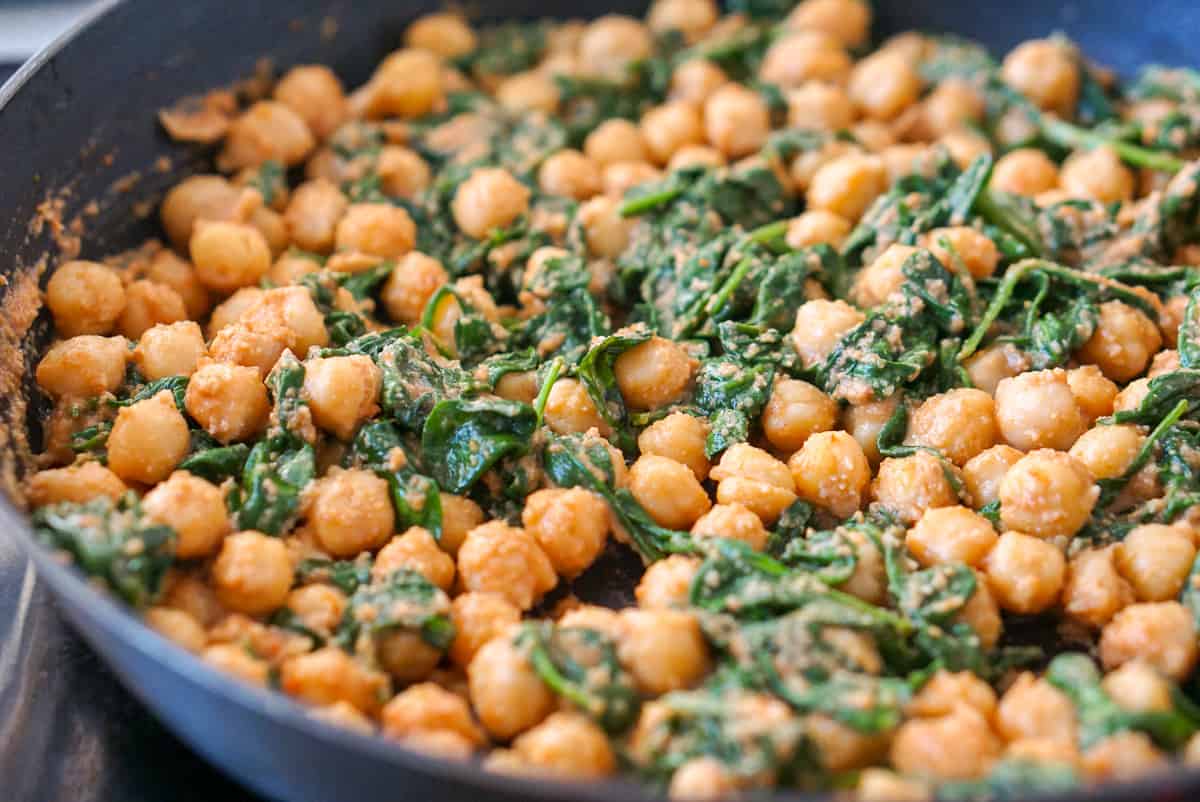
Make It: Give my Spanish spinach and chickpeas recipe a try—I think I’ve perfected it!
20. Papas con Mojo
This recipe comes from the Canary Islands, which have a cuisine all their own! First, potatoes (papas, which are called patatas in the rest of Spain) are cooked in super salty water so that they form a crispy salt crust. This preparation is also known as papas arrugadas (“wrinkled potatoes”).
The potatoes are served with mojo verde and mojo picón: two iconic sauces that are perfect for dipping and incredibly easy to make! This dish is a great example of how the same old simple ingredients can be combined in a totally unique way.
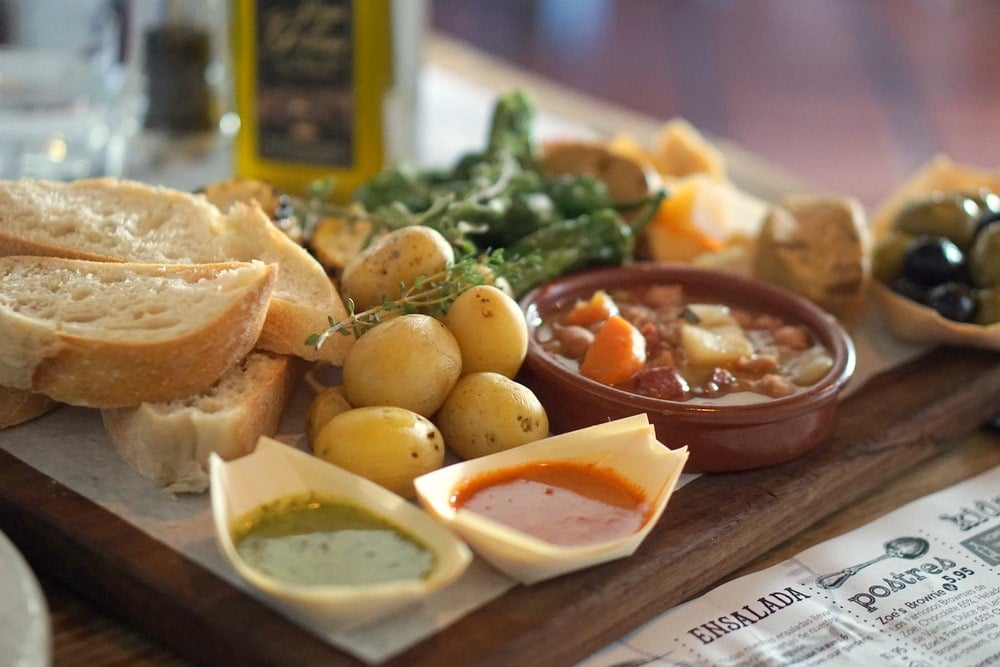
Make It: Complete the holy trio of Canarian cuisine with my papas arrugadas recipe, mojo verde recipe, and mojo picón recipe.
21. Traditional Paella
How could I list essential Spanish recipes without mentioning paella? At first I was a bit unsure; there are so many ways to make this famous Spanish rice dish, and many people take the recipe very seriously!
But I couldn’t resist sharing this delicious paella recipe. It’s the most traditional type of paella from Valencia, featuring meat and veggies (not seafood). And to be honest, it might be my favorite kind…

Make It: This traditional Spanish paella recipe never fails.
22. Seafood Paella
Since most people searching for paella are looking for a seafood version, I had to share this recipe as well. While the traditional Spanish paella from Valencia (above) doesn’t include seafood, some of the country’s best rice dishes most definitely do!
I absolutely love seafood paella with shrimp and squid, but you’ll often find clams, mussels, and even fish. In my opinion, the most important part isn’t the seafood you choose; it’s the way you cook the rice!
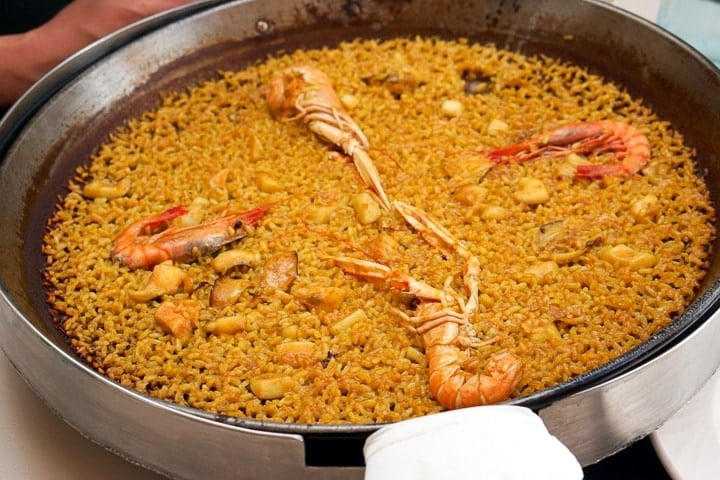
Make It: Break out this classic seafood paella recipe for your next dinner party!
23. Patatas Bravas
A favorite tapa in the bars of both Barcelona and Madrid, this is a classic Spanish recipe that pleases everyone!
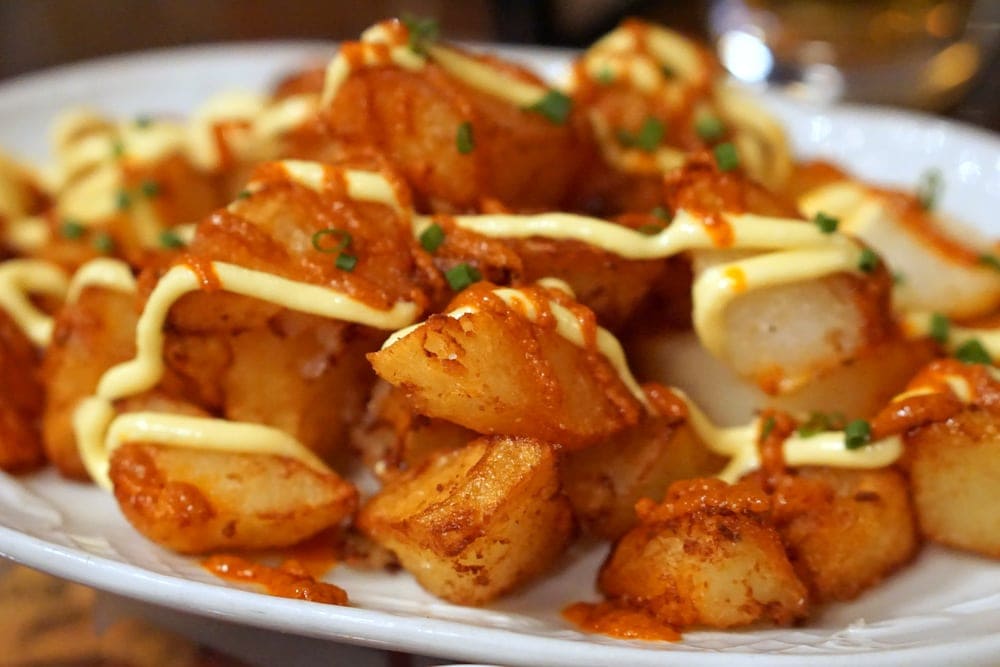
Patatas bravas are an easy choice when ordering tapas in Spain, and they’re pretty easy to make at home too. You can serve them Madrid-style (with only bravas sauce) or Barcelona-style (with both bravas sauce and alioli). Either way, you can’t go wrong!
Make It: Pair my go-to patatas bravas recipe with my easy bravas sauce recipe and alioli recipe.
24. Padrón Peppers
These little fried peppers are addictive—I call them Spanish popcorn! Luckily, they’re also super simple to make (and even to grow, depending on where you live).
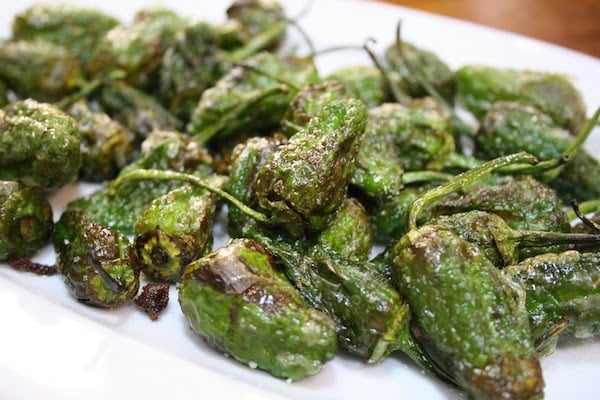
There’s a saying about pimientos de Padrón: “some are hot and some are not.” In other words, you never know if your next bite is going to be mild or spicy. As long as you’re prepared for the latter, this adds a fun twist to an otherwise simple tapa!
Make It: Bookmark this easy Padrón peppers recipe.
25. Arroz con Leche
This was one of the first recipes my mother-in-law shared with me, and it just might be the best Spanish arroz con leche recipe on the internet! Antonia is so proud when people leave her rave reviews.
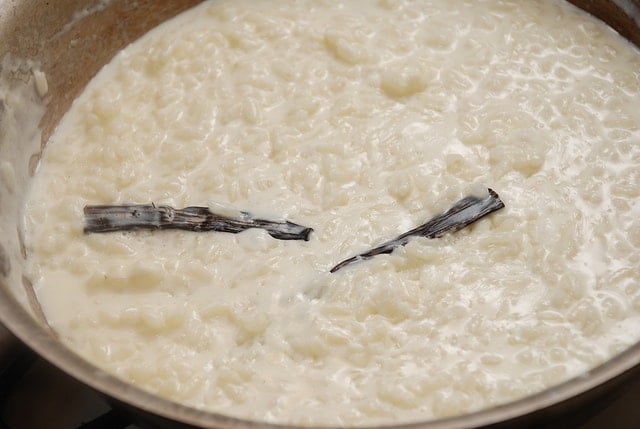
The secret to her fantastic recipe is to slowly add the milk over a 15- to 30-minute period, stirring constantly. This allows the rice to break down slowly and get nice and creamy.
Make It: Antonia’s world-famous arroz con leche recipe never fails!
26. Lentejas
There’s nothing more soul-warming than a hot bowl of Spanish lentejas. This delicious stew combines hearty lentils with smoky chorizo and veggies for a nutritious and comforting meal in one pot.
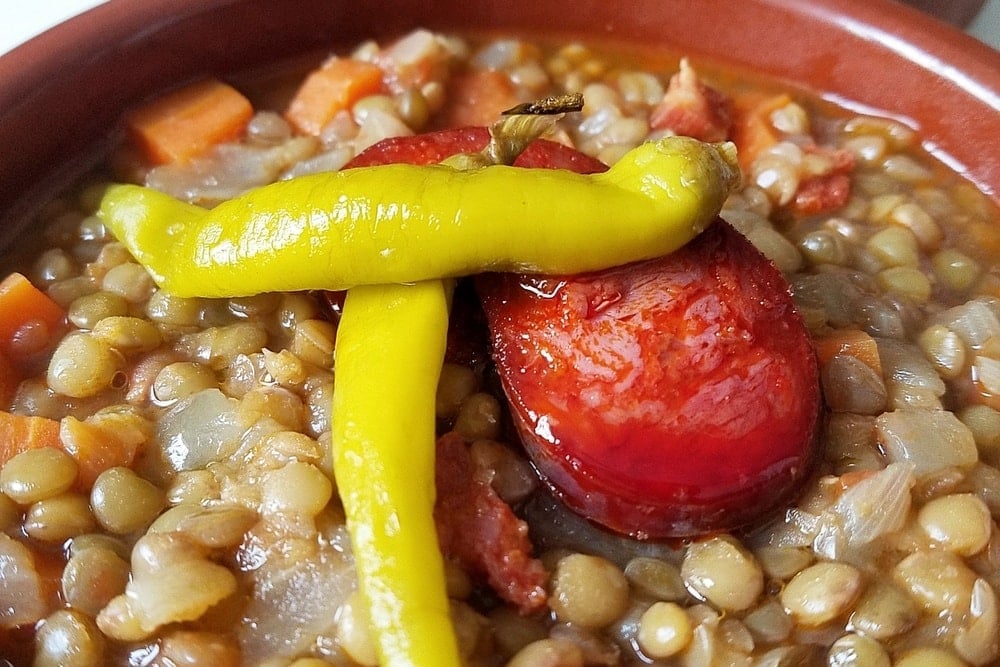
I perfected my Spanish lentils recipe while at culinary school in Barcelona. My favorite garnish? Spicy pickled peppers!
Make It: Try my favorite Spanish lentil soup recipe—featuring chorizo!
27. Fabada
I love bean stews and soups, and grew up eating many different Italian-American versions. Luckily, Spain reigns supreme in this area—and fabada is the king of Spanish bean dishes.
A hearty white bean stew from Asturias, fabada combines chorizo, pork fat (tocino), and blood sausage (morcilla) for the perfect stick-to-your-ribs winter meal. It doesn’t get much more protein-packed than this!
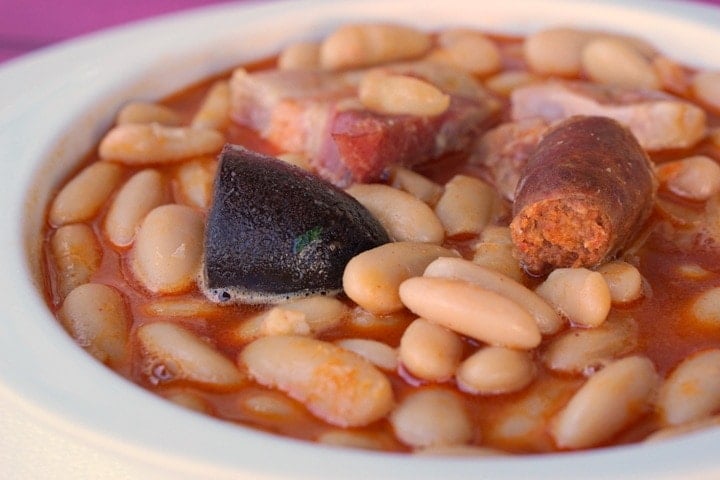
You might think this dish takes hours to make, but that’s not the case! If you use high-quality beans from a can or jar instead of dry ones, you can have this soup ready in just 30 minutes.
Make It: My classic Spanish fabada recipe will warm you right up.
28. Rabo de Toro
While we’re on the subject of hearty winter meals, I couldn’t leave rabo de toro (braised oxtail or bull tail) off the list. This is a classic Spanish dish, and while it does take a few hours to make (the tough meat needs time to become melt-in-your-mouth tender), the actual work involved is minimal.
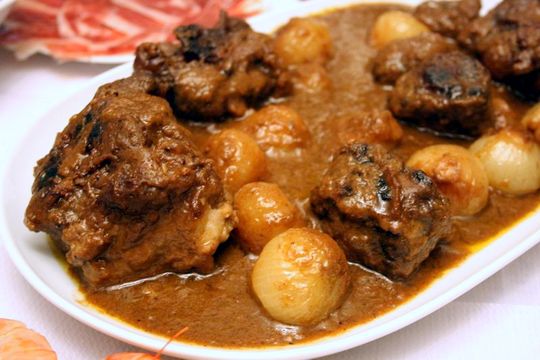
Make It: Get my mother-in-law’s recipe for braised bull tail stew.
29. Perfect Boiled Shrimp
Last but not least is a recipe near and dear to my heart: the appetizer for every special meal at my mother-in-law’s house. In the south of Spain, gambas cocidas (boiled shrimp) are a delicacy and a popular tapa. They’re also super easy to make—this is a five-minute dish!
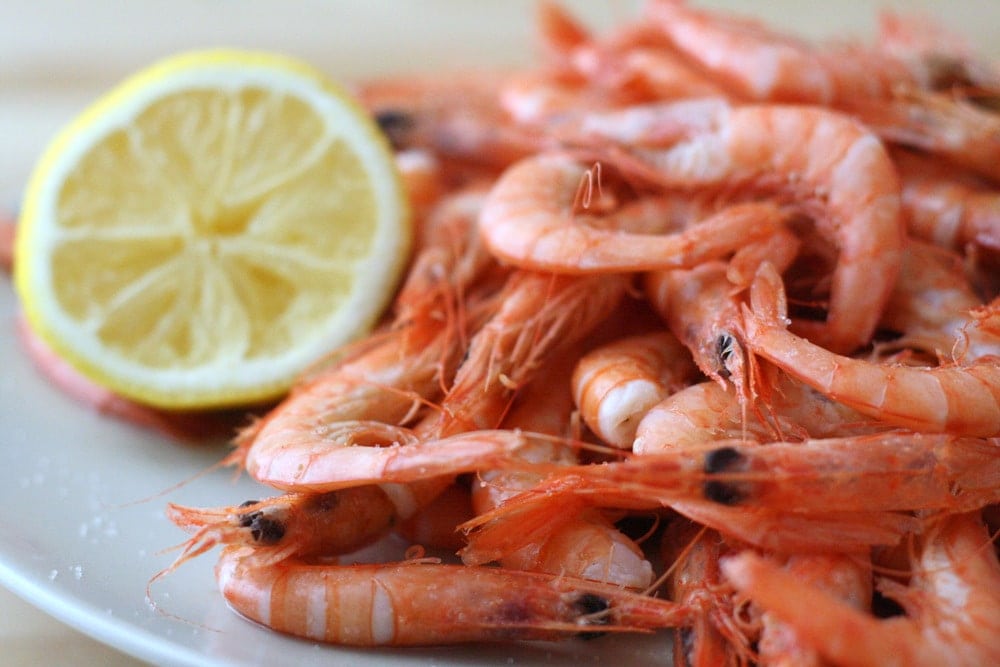
Make It: Get my recipe for perfect boiled shrimp—maybe it’ll become a tradition at your house too!
Spanish Recipes FAQ
Spain has dozens of traditional dishes, but some of the most common are tortilla de patatas, pan con tomate, croquetas, gazpacho, and huevos rotos. For dessert, classics like arroz con leche, crema catalana, and flan reign supreme.
Paella might seem like the obvious answer, but I’d argue that the ubiquitous tortilla de patatas is the dish that truly represents Spain. This simple potato omelet is everywhere, beloved by Spaniards and tourists alike, and everyone swears by their own favorite version.
Lots of authentic Spanish dishes are super easy to make. Start with pan con tomate, pimientos de Padrón, or a cold soup like gazpacho or salmorejo. Other incredibly simple specialties include gambas cocidas, espinacas con garbanzos, and pisto con huevo.
Spanish food can be many things, but it’s almost always based on high-quality fresh ingredients prepared with care. Many of the most iconic Spanish dishes consist of just a few elements—potatoes, tomatoes, bread, olive oil, eggs—combined in simple perfection.
Hungry for more? Sign up for my free weekly newsletter and receive a new Spanish recipe once a week! Join today and get my FREE Spanish ingredient essentials guide!
[ad_2]
Source link